|
2725 views|0 replies
frozenviolet
Currently offline
|
The OP
Published on 2006-7-14 19:03
Only look at the author
This post is from Automotive Electronics
| |
|
|
||
- 【Posts】A brief discussion on some application scenarios of ADI promoting the development of the automotive industry
- 【Posts】Why are the application scopes of fieldbuses different?
- 【Posts】Suruid's new intelligent vehicle-mounted CANBUS data acquisition OBD interface transmission and power supply installation application method
- 【Posts】Novel dual-band printed antenna design for future mobile applications
- 【Posts】Is there any safety hazard when using a rechargeable fan after removing the battery pack?
- 【Posts】I would like to ask about this schematic diagram. I need to convert the mains 220V to DC24V. The safety and stability requirements are relatively high.
- 【Posts】I am working on a product for traffic security equipment recently. The project has high safety requirements and heavy tasks. I am having a headache recently...
- 【Posts】Be sure to pay attention to safety when driving on the road! Stay away from large vehicles!
- 【Download】Fieldbus Technology and Its Application (Yang Xianhui)
- 【Download】Fieldbus Technology and Its Applications (2nd Edition)
- 【Download】Application of Fieldbus Technology in Embedded Operating Systems.rar Full text of thesis
- 【Download】Application of Fieldbus Technology in Circulating Water Treatment
- 【Download】Design and application of EtherCAT driver for industrial Ethernet fieldbus
- 【Download】Typical Circuit Design and Application of New Switching Power Supply (2nd Edition)
- 【Download】Principles and Applications of Modern New Sensors 269 pages 7.0M.pdf
- 【Download】Mobile power technology and application of distribution network under the background of new power system (Wu Ming)
- 【Design】STEVAL-FSM01M1: ST's dual-channel digital I/O module for industrial safety applications
- 【Design】USB Armory Mk II: Small Open Source USB Computer for Security Applications
- 【Design】MAXREFDES143#: Application of DeepCover embedded security in the field of IOT security certification detection and notification
- 【Design】TRK-USB-MPC5643L: MPC5643L StarterTRAK for safety applications
- 【Design】AMIS492X0GEVB: Fieldbus Media Access Unit Evaluation Board
- 【Design】Modbus_RTU (RS485) fieldbus Remote Inputs/Outputs Modules system design based on GD32E231
- 【Circuits】Application of new LED drive circuit SD6955
- 【Circuits】New micropower low dropout voltage regulator application circuit 06
- 【Circuits】New micropower low dropout voltage regulator application circuit 03
- 【Circuits】New micropower low dropout voltage regulator application circuit 04
- 【Circuits】New micropower low dropout voltage regulator application circuit 02
- 【Circuits】New micropower low dropout voltage regulator application circuit 05
- 【Articles】Application of devicenet bus technology in the underlying control system of industrial sites
- 【Articles】Typical Application of Fieldbus Technology in Substation Automation System
- 【Articles】Application of Fieldbus Technology in Thermal Control Systems
- 【Articles】Application of Fieldbus Technology in Power Supply Monitoring System
- 【Articles】Application of LonWorks Fieldbus Technology in Train Monitoring System
- 【Articles】Application of Industrial Field CAN Bus Technology in Aerospace Field
-
Application of Torque Sensors in the Automotive Industry
Next,letmetellyouabouttheapplicationoftorquesensorsinautomobilesToensurethesafetyofthecarandreducefuelconsumption,thetorquemeasurementenginereducesfuelconsumptionandreducesradiationsensorsandotherparameterfeedback.Astheautomotiveindustryevo ...
-
Design of application model using Bluetooth technology in fieldbus
TraditionalfieldbusnetworksgenerallyusewiredmediaastransmissionmediaSomespecialindustrialfieldenvironmentsrequirefieldequipmenttohaveacertaindegreeofmobility,sowiredcommunicationtechnologyisnotsuitablefortheconnectionofmobiledevices.Traditi ...
-
【Follow me Season 2 Episode 3】+ Development Environment Construction 1
Downloadthee2studioinstallationpackagefileasshownbelow,double-clickandfollowthepromptstoinstallitstepbystepAfterinstallation,double-clicktoopentheinterfaceasshownbelow.SelectthesoftwareprojectstoragepathandclickStartUsetheserialterminalofe2 ...
- I need help from the experts. The highest multiplier of the 4046 simulation I use can only reach 600k, and it won’t work if it is higher. I don’t know why?
- Why is the reference voltage not 1.5V?
- [Project source code] Mif wizard/mif (coe) file generator based on FPGA
- Controlling Hardware with Python - Measuring the Resonant Frequency of an Object Using the ADXL335 Accelerometer
- Useful Tips | Don’t throw away your old phone, here’s a step-by-step guide to DIY a server
- Is anyone using R7F0C805? Please give me some advice!
- How to measure load impedance, current & voltage signals?
EEWorld Datasheet Technical Support
-
Huawei's Strategic Department Director Gai Gang: The cumulative installed base of open source Euler operating system exceeds 10 million sets
On November 15, it was reported that the first AI native open source operating system of openEule
-
Whether it is the electrification of automobiles or generative artificial intelligence, power tec
-
Wi-Fi 8 specification is on the way: 2.4/5/6GHz triple-band operation
MediaTek has released a white paper on its official website, outlining some details of the next-g
- Vietnam's chip packaging and testing business is growing, and supply-side fragmentation is splitting the market
- Apple faces class action lawsuit from 40 million UK iCloud users, faces $27.6 billion in claims
- The US asked TSMC to restrict the export of high-end chips, and the Ministry of Commerce responded
- ASML predicts that its revenue in 2030 will exceed 457 billion yuan! Gross profit margin 56-60%
- Qualcomm launches its first RISC-V architecture programmable connectivity module QCC74xM, supporting Wi-Fi 6 and other protocols
- It is reported that memory manufacturers are considering using flux-free bonding for HBM4 to further reduce the gap between layers
- ON Semiconductor CEO Appears at Munich Electronica Show and Launches Treo Platform
- Problems with STM32 and passive buzzer playing sound
- Embedded Tutorial_DSP Technology_DSP Experiment Box Operation Tutorial: 2-28 Building a Lightweight WEB Server Experiment
- OPA847IDBVR op amp domestic replacement
- AG32VF407 Test UART
- [Digi-Key Follow Me Issue 2] Chapter 1: Sharing on receiving the goods
- What model is this infrared receiver? Which model can be used instead? Thank you
- Selling brand new unopened ZYNQ 7Z020 FPGA core board
- The LORA module used in the lithium battery-powered water meter setting can save energy when 100 water meters are installed in one corridor.
- I would like to ask, when a port is set to RX0, is it necessary to set the input and output direction of this port?
- Why is this year so difficult? It’s even more difficult than during the pandemic. I’m 30 and facing unemployment. I’m so confused.
- Ask about the voltage regulator test question
- [Xiaohua HC32F448 Review] About Xiaohua Semiconductor's UART interrupt sending and PRINTF construction and redirection
- 【BIGTREETECH PI development board】 HDMI output test
- 【BIGTREETECH PI development board】+08. Audio test (zmj)
- [Xiaohua HC32F448 Review] +RTC electronic clock
- Canaan K230AI Development Board Review 8--Face 3D Network, Human Key Points, License Plate Recognition, Character Recognition, Object Recognition
- Embedded Engineer AI Challenge Camp (Advanced): Deploy InsightFace algorithm on RV1106 for real-time face recognition of multiple people
- # STM32H7S78-DK Development Kit Three-week Review: Implementation and Analysis of Simple Sound Collection and Storage Using SD Card Reading and Writing
- [STM32H7R/S] Review⑧ nano edge ai studio training a model--Part 1
- [2024 DigiKey Creative Competition] A "fortune-telling" artifact based on Raspberry Pi
- New energy vehicle on-board AC slow charging and maintenance
- Embedded Engineer AI Challenge Camp (Advanced): Deploy InsightFace algorithm on RV1106 for real-time face recognition of multiple people
- I want to make a self-driving car. I saw one on Bilibili that costs 300 yuan. I am hesitant.
- [K230 Embedded AI Development Board Review] + License Plate Recognition and Billing Management
- How to deploy LVGL free graphics library on low-cost ARM platform, based on Allwinner T113-i
- 参会有好礼 | 2024 瑞萨电子MCU/MPU工业技术研讨会
- 深圳站:11月30日(周六)深圳湾万怡酒店
上海站:12月06日(周五)上海喜玛拉雅酒店
奖励设置:现金红包、螺丝刀套装或30元京东卡
- Littelfuse 新品赋能电子产品安全可靠并高效, 10+挑战等你探索!
- Littelfuse 应用赋能星球,覆盖了诸多应用痛点及解决办法,邀请工程师一起探索,解锁更多设计力!
- 了解英飞凌新品AIROC™ CYW5591x 无线MCU,答题赢好礼!
- 无线键盘鼠标套装、智能音箱、登山包、收纳包
- 下载资料赢好礼!看Vicor模块化电源解决方案如何推动创新
- 活动时间:即日起-2024年12月31日
如何参与:点击活动页内您想了解的模块,找到资料下载即可参与抽奖,活动结束后统一发奖!
- 有奖活动|英飞凌高密度双相电源模块为高性能运算平台而生
- 活动时间:即日起-12月15日
活动奖励:蓝牙音箱、氮化镓充电器套装、黑色小背包
- 本周精选下载推荐:电源管理基础Dummies
- 本周小编给大家带来一本超简单、超干货的电子书——《电源管理基础Dummies》!内容深入浅出,排版舒服简洁,分分钟能get到电源管理最核心的知识内容。
EEWorld
subscription
account

EEWorld
service
account

Automotive
development
circle

About Us Customer Service Contact Information Datasheet Sitemap LatestNews
- I want to get started with microcontroller graphics programming, what should I do?
- I want to get started with machine vision learning, what should I do?
- I want to get started with artificial neural networks, what should I do?
- For the introduction of SMT32 microcontroller C language, please give a learning outline
- For the introduction to smt programming, please give a learning outline
- How to get started with FPGA
- What framework is good for beginners of deep learning?
- How to get started with microcontrollers
- How to get started with machine learning
- Can chatgpt be used in China?


 Room 1530, Zhongguancun MOOC Times Building,
Block B, 18 Zhongguancun Street, Haidian District,
Beijing 100190, China
Tel:(010)82350740
Postcode:100190
Room 1530, Zhongguancun MOOC Times Building,
Block B, 18 Zhongguancun Street, Haidian District,
Beijing 100190, China
Tel:(010)82350740
Postcode:100190
 京公网安备 11010802033920号
京公网安备 11010802033920号


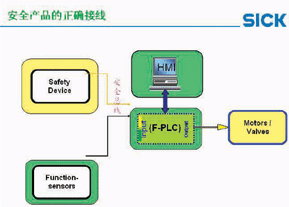
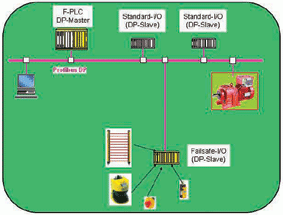
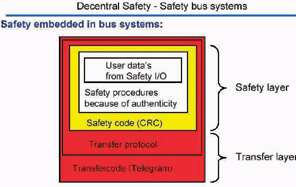
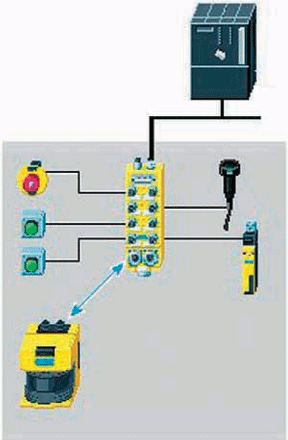
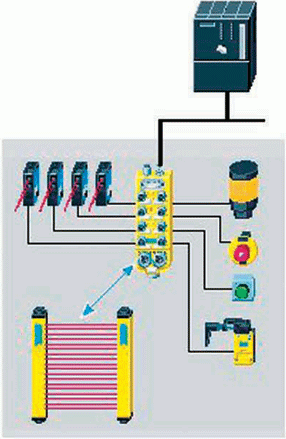
 提升卡
提升卡 变色卡
变色卡 千斤顶
千斤顶